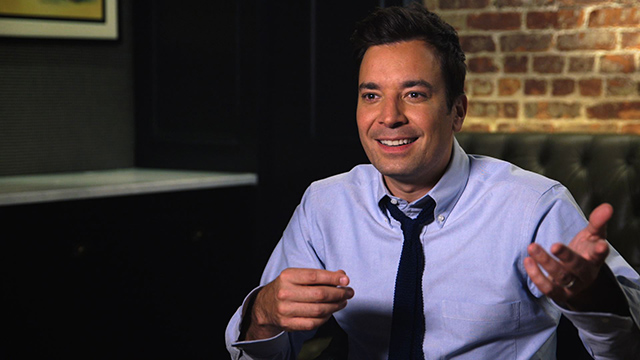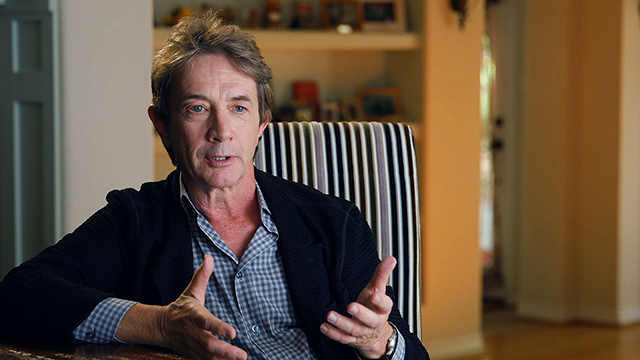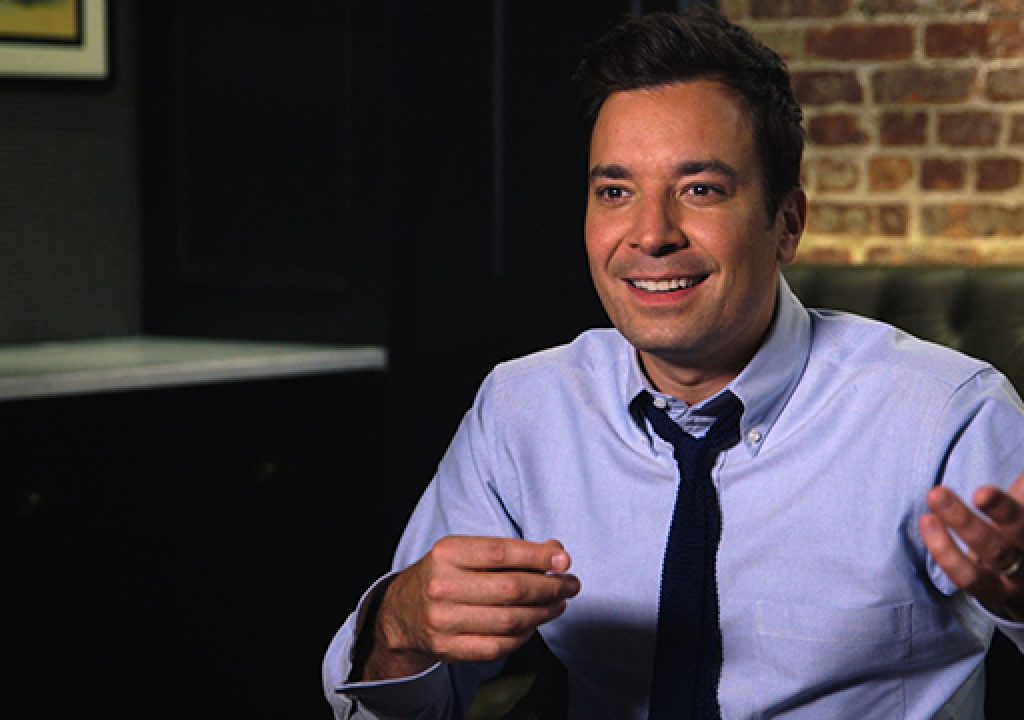Best known for his roles in films like The Usual Suspects, A Few Good Men, and Casino, actor and comedian Kevin Pollak is a born entertainer, having perfected his first standup routine when he was just ten years old. And for the past six years, when not putting the real William Shatner or Christopher Walken to shame with his truer-than-life impressions, Pollak has been busy persuading celebrities to tell all on his wildly successful—and hilarious—online chat show.
But now Pollak can add film director and editor to his long list of talents. He just finished editing his first feature-length film, Misery Loves Comedy, using Adobe Premiere Pro CC, which we recently had the opportunity to speak with him about. Debuting at the 2015 Sundance Film Festival later this month, the film explores the less humorous side of being a professional comedian, featuring the likes of Jimmy Fallon, Amy Schumer, Judd Apatow, Christopher Guest, Martin Short, Jon Favreau, and many others. Despite the pensive theme, Pollak assured us, the film remains highly entertaining and should be widely available later this year.

Jimmy Fallon, Courtesy of Sundance Institute
Adobe: So what is Misery Loves Comedy about?
Pollak: It’s a feature-film documentary incorporating interviews with over 60 incredibly famous funny people; all revolving around the thesis “Do you have to be miserable to be funny?”
Adobe: Where did the idea for the film come from?
Pollak: The genesis of the idea belongs to a producer named Becky Newhall. She was working on developing a documentary about standup comedians who suffered from clinical depression when I was introduced to her by a gentleman I was working with named Burton Ritchie, who founded his own production company called Heretic Films. My online series Kevin Pollak’s Chat Show, which is basically a fun Charlie Rose and coming up on its six-year anniversary in March, features interviews with writers, performers, actors, musicians, and even Elon Musk and Sugar Ray Leonard. Burton knew that I’d been booking that show myself and conducting long-form interviews, and for that reason, plus my 35 years in standup comedy—not to mention my existing aspirations to direct a script of mine—he thought this would be a perfect match. That was in August 2013.

Martin Short, Courtesy of Sundance Institute
Adobe: How did you go from directing the film to trying your hand at the actual editing, too?
Pollak: Well, the first thing I did when deciding to direct the documentary was to get a two-time Academy Award-winning genius, in this case Robert Legato, to slum and be my editor. And he and I began the complicated task of figuring out what to do with 70 hours of interviews and how to make an actual story and film out of it. There was no script. There was no narrative. There was no sort of storytelling format or anything to work off of. The big shift happened when one of the producers asked that we create a 10-minute version of what the film might be like, to show to potential investors in his film slate the following year.
And while I had sat next to Rob and other editors on other projects, the notion hadn’t yet crossed my mind that I might be editing this film myself until shortly after we finished that 10-minute version. Rob had been given a chance to direct a film of his own, and it quickly became clear that he was going to have to introduce me to the task of editing the film. So he sat me down to hand over the reigns by giving me a very basic one-on-one editing lesson using Premiere Pro, part of Adobe Creative Cloud. At first, there were a few things that were slightly confusing, but only because it was Robert Legato showing you how to edit. It was Yoda saying no, no, that’s not how you raise the ship out of the water. This is how you do it.
It didn’t take too much longer for me to get the gist, but again, he was only showing me very basic steps—creating clips, putting them into a bin, moving them around, using two monitors to show all your work, basic slicing, dicing, and connecting. But I really found the ease of use of Premiere Pro unmatchable, and for a beginner like me it was perfect. It ended up being my favorite part of the entire production because I love puzzles and putting them together, and even though I’d witnessed a lot of editors at work, I’d never taken the helm of the keyboard myself to create those magical moments that are only found in editing.
Lewis Black, Courtesy of Sundance Institute
Adobe: You also used Kickstarter during the production, right?
Pollak: Yes, to raise the last $50,000. The budget was $350,000 and that got us to the finish line. But using Kickstarter was also about finding out what sort of support we had in the community through the Internet. I made the public at large aware of the Kickstarter campaign using only Twitter and my chat show online, so the fact that we reached our goal in short order was pretty fantastic and amazing. It’s also just a great marketing tool, there’s no question about it.
Adobe: How much do you suppose Misery Loves Comedy owes its success to your ability to use tools like Kickstarter and Adobe Premiere Pro?
Pollak: There’s no question that Kickstarter helped me to reach out into the community, create some awareness, create some groundswell, and that Premiere Pro made a first-time director and editor’s job absolutely more feasible, exciting, and fun. So they serve rather different functions for an independent filmmaker, and I don’t know that they’re on equal footing in terms of their contribution to the final product, but they both certainly helped.
Amy Schumer, Photo by Josh Negrin, Courtesy of Sundance Institute
Adobe: Let’s talk a little about Misery Loves Comedy itself. Did the theme of the film resonate with you personally? Are you miserable, Kevin?
Pollak: Well, I’m extraordinarily fortunate to have had a fairly easygoing suburban middle-class upbringing with well-adjusted friends and family, for the most part—certainly in comparison to the deep, dark depression that I have experienced in others. I mean, I started in standup when I was 10, decided to do it professionally at 17, turned pro by 22, and rose to the top of the scene in San Francisco by the time I was 25. My whole life has been devoted to the art form, and in that time I have experienced the misery of others way more than my own.
But the film did open up beyond its initial thesis, “Do you have to be miserable to be funny?” As I got deeper into the editing process, creating a narrative from my dozens of hours of interviews, I discovered that there was a lot more to the story. The narrative really became “Who the hell chooses a life devoted to standing in front of total strangers and trying to make them laugh?” But it’s also a look at who chooses the life of a performing artist in general, which is not for the faint of heart.
Did you know that Americans’ number one fear, above even death, is public speaking? Now let’s add that while you’re doing your public speaking, you must elicit laughter. Laughter is an involuntary response, which makes it difficult to get. So what kind of person sets themselves up for that level of rejection?
Tom Hanks, Photo by Josh Negrin, Courtesy of Sundance Institute
Adobe: Is that more the specific thesis, then? What motivates someone to choose a professional comedy career?
Pollak: Yes, that question really became the central focus, and different individuals’ journeys fill out the story in the film as we ask: When in life did you choose that path? Did you get support? Was there a moment when you knew you were going to devote your life to it? Or did you stumble ass-backwards into it?
Through hearing these various stories, we find that everyone experiences misery. There’s no avoiding it, though to what degree each of us are forced to face it and how often varies. But for the artist, be it a writer, painter, musician, comedian, or filmmaker, we have to figure out a way to articulate it, either by making it universal—“Hey, can you believe we’ve all suffered through this?”—or personal, sharing “This is what I went through” with others, even if we make it hilarious.
Adobe: Why do you think artists feel a need to articulate their misery?
Pollak: We’ve all heard that laughter is the best medicine, right? And innately funny people have an advantage, if you ask me, in terms of dealing with misery, because their instinct is to go to a joke, to find what’s funny about it. But for any creative person, the angst, pain, suffering, or misery we often associate with artists doesn’t always come from having to create the art. It comes from life, and then you use your art to almost cleanse yourself of it.
Jon Favreau, Courtesy of Sundance Institute
Adobe: I’m sure a lot of people are going to have Robin Williams on their minds when they see the film. Did you have plans to include him?
Pollak: I first met Robin during my formative years as a standup when I started out in San Francisco at the age of 20. He had just made it big in LA with the first season of Mork & Mindy, landing the cover of Time magazine, but he’d begun his standup career in San Francisco and chose to live there, and he became a great lifelong mentor and friend.
While we were shooting Misery Loves Comedy, he and I were on the phone several times, trying to schedule a time that could work for him, but he was shooting his TV series and scheduling was a nightmare. We really tried to make it work and he felt bad that he couldn’t do it, but I think there was also a sense of whether or not he was ready and comfortable enough to go there, as it were. In any event, the film was pretty much already done when he died, and the very least thing I could do, because of how much he meant to me personally, as the filmmaker, was dedicate the film to him in the end credits—in memory and gratitude to Robin Williams. I didn’t want it to come across as exploitative in any way, shape, or form, but it seemed absolutely absurd to not include him somehow, not because of his end but rather because of his life.
Larry David, Courtesy of Sundance Institute
Adobe: Were Robin’s struggles representative of the kinds of experiences you heard recounted by others?
Pollak: You know, we have several people in the film who’ve suffered from clinical depression the way that Robin did. Robin chose to keep it secret. Most people do, I think. Maria Bamford is in the film talking about being in a psych ward, what that meant, and what it meant to have standup comedy to talk about it onstage. Freddie Prinze Jr. opens up for the first time on camera about his struggle to reconcile the suicide of his father, who was arguably the top young comedian in the world at the time of his death. And Kevin Smith talks about a dear friend who was literally on the verge of suicide before starting a podcast that allowed him to speak his mind, share his pain, be funny, and win over an audience, which literally saved his life. So there is a lot of what Robin was going through that’s shared by others through their own stories.
Adobe: Given all of that, what is the overall mood of the film?
Pollak: Well, comedians can’t help but to be funny while talking about their pain and their experience, so it was quickly apparent that I was cutting a comedy and not a tragedy. As Jim Jefferies says, “I don’t think you have to be miserable to be funny, but I think you have to be miserable to be really funny.”
Adobe: So where will be able to see Misery Loves Comedy?
Pollak: We have our world premiere at the Sundance Film Festival on January 23rd, followed by a screening at San Francisco Sketchfest on February 7th in the Castro Theatre. Also, we’ve just closed a US theatrical distribution deal that we’ll announce at Sundance, which is very exciting.
Adobe: Thanks for taking the time to speak with us about your work, Kevin.
Pollak: My pleasure, and thanks for your interest in whatever the hell it is I have to say on the matter.


